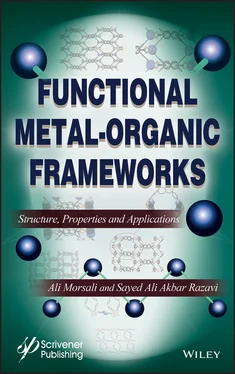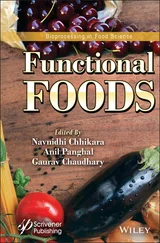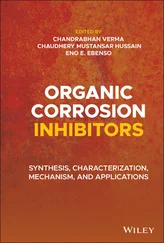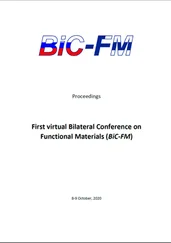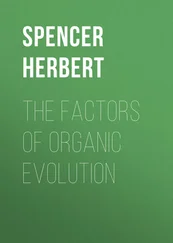The authors
October 2020
1
Introduction to Functional Metal–Organic Frameworks
Abstract
In this chapter, we discuss about the advantages of porous materials and crystalline materials and explain that what kinds of benefits are attainable if these advantages combine together in the structure of functional materials like metal-organic frameworks. Then, functional metal-organic frameworks are discussed and classified based on the roles of organic functions in the structure and application of MOFs.
Keywords: Porous materials, crystalline materials, functional metal-organic frameworks, coordination polymers, host-guest chemistry, function-application properties, function-structure properties
1.1 Coordination Polymers
Solid materials are generally classified in amorphous and crystalline (single-crystalline or poly-crystalline) solids in chemistry and material science. Crystalline solids are constructed based on periodic symmetrical arrays of constituents giving rise to definite, regular and repeating pattern of the solid in three dimensions over a large distance. Such long-range structural order rises in the beneficial fact that crystalline solids represent specific and repeatable chemical properties. This is a very pivotal advantage which is not observed in amorphous solids. For example, crystalline solids are of sharp melting point and definite heat of fusion while amorphous solids have not a characteristic heat of adsorption and sharp melting point. As a result, crystalline solids benefit from repeatable structure and chemical properties which are fitting characters in application of novel materials.
Another classification of materials is based on their porosity. Porosity, which also is called void fraction, is defined as the ratio of vacant space (void) in material to the total volume that the materials occupy. This fraction is always between 0 and 1. Porous materials encompass vacant spaces in their structure based on accessible pore volume (vacant cavities or channels) for guest molecules. This is a unique advantage of porous material in which not only can they interact with guest molecules on their surface, but also they can adsorb and interact with guests within their pores inside the bulk material. The characteristics of a porous material define by their surface area (m 2·g −1), accessible pore volume (m 3·g −1), shape, size and distribution of pores. Based on pore size, porous materials are classified in three major groups including microporous (in the range of 2 nm and below), mesoporous (in the range of 2 to 50 nm) and macroporous (above 50 nm) [1]. Another way to classify porous materials is pursuant to uniformity in the pore size, volume and distribution [2]. In this approach, porous materials are classified as ordered (uniform) and non-ordered groups. Uniform porous materials are developed based on same pore size, shape and distribution. To observe such uniformity in porosity, a porous material must be founded on uniform and repeatable structural patterns. This uniformity in the structure and porosity is essential for some of superior applications like size selective separation of a small molecule from a mixture containing large molecules. In size selective applications, guest molecules with smaller size (or kinetic diameter) than pore aperture of the host are able to diffuse into the pores of ordered porous material while molecules with larger size cannot. Definitely, porous materials without uniformity in their pore size and distribution could not be applied in size-selective applications because they cannot differentiate guest molecules with different sizes. These contents indicate that crystalline porous solids with regular and repeatable structure and porosity are very efficacious in molecular-sieving and also other kinds of applications.
Crystalline porous solids can be extended by different types of interactions (ionic and hydrogen bonds, covalent interactions and coordination interactions) between their individual molecular building blocks [3]. Especially, crystalline porous materials which are developed by coordination interactions are coordination polymers (CPs). In structural view, CPs could be extended in different dimensions, so they could be 1-dimensional (1D), 2D or 3D. Also, they are synthesized based on linkers and metal ion/clusters when a polydentate linker is able to associate multiple metal centers through coordination bonds in self-assembly process ( Figure 1.1) [4]. As a subclass of CPs, metal–organic frameworks (MOFs) are porous, three-dimensional and developed based on polydentate organic ligands and metal ion/clusters ( Figure 1.2). Although these terms, MOFs and CPs, are widely applied interchangeably in the literature, there are some similarities and differences between both terms.

Figure 1.1 Representation of CPs building blocks, synthesis and dimensionality.

Figure 1.2 Depiction of MOF-5 (Zn 4O(BDC) 3) as one of the most well-known MOFs. MOF-5 is synthesized using zinc nitrate and 1,4-benzenedicarboxyxlic acid (H 2-BDC). In self-assembly process Zn(II) ions and deprotonated 1,4-benzenedicarboxyxlic acid bond together through coordination interactions between Zn(II) ions and BDC 2−linkers to develop MOF-5 in solid phase [5].
In 2013, IUAC recommended that CP could be defined as a “coordination compound with repeating coordination entities extending in 1, 2, or 3 dimensions” while MOF is defined as “coordination network with organic ligands containing potential voids” [6]. It is necessary to mention that IUPAC defines coordination networks as a “coordination compound extending through repeating coordination entities in 2 or 3 dimensions” [6]. Based on these recommendations it could be concluded that CPs could be 1D, 2D or 3D with repetitive building blocks connected with coordination interactions while MOF are porous with hybrid organic–inorganic nature and they are at least extended in 2 dimensions. Also, there is another hidden point in these IUPAC definitions which must be clarified. In these definitions there is no persistence on crystallinity of the materials. In other word, it is not mentioned that CPs must be crystalline. It means that crystalline porous materials based on coordination interactions are coordination polymers while CPs could be both crystalline and amorphous. In another common approach about MOFs and CPs, it is realized that porous 3D structures may be called as MOFs [7]. In conclusion, the most important differences between MOFs and CPs revolve around their dimensionality and porosity [8].
1.2 Metal–Organic Frameworks
After pioneering works of Yaghi in 1995 [9], a remarkable number of chemists and material engineers are engrossed in design and application of MOFs. Such great interest among scientists is because of their unique characters which make MOFs suitable for diverse industrial and real-life applications [10, 11].
As mentioned, MOFs are constructed based on organic and inorganic building blocks. In most cases, organic ligands are ditopic or polytopic O-donor ligands based on carboxylates linkers or N-donor ligands based on pyridine pillar spacers. Metal-containing units founded on different kind of metal ions, mostly based on lanthanide cations (like Ln(III), Tb(III), Eu(III), Dy(III) and Sm(III)), transition metals (like 3d cations like Zn(II), Cu(II), Ni(II), Co(II), Fe(III) or Fe(II), Mn(II) and Cr(III) or Cr(II) and heavy transition metals like Cd(II), Zr(IV), Hf(IV)) and main metal ions (Al(III), or some of alkaline or alkaline-earth cations). As a result of such diversity in selection of building blocks, unlimited number of MOFs with different structural and practical properties can be developed by changing metal ion/clusters, using various combinations of these inorganic building blocks and infinite types of organic linkers with different lengths, functionalities and geometries. Additionally, since MOFs are developed based on organic and inorganic building blocks, their hybrid organic–inorganic nature is suitable for tuning the structure and application of MOFs.
Читать дальше
